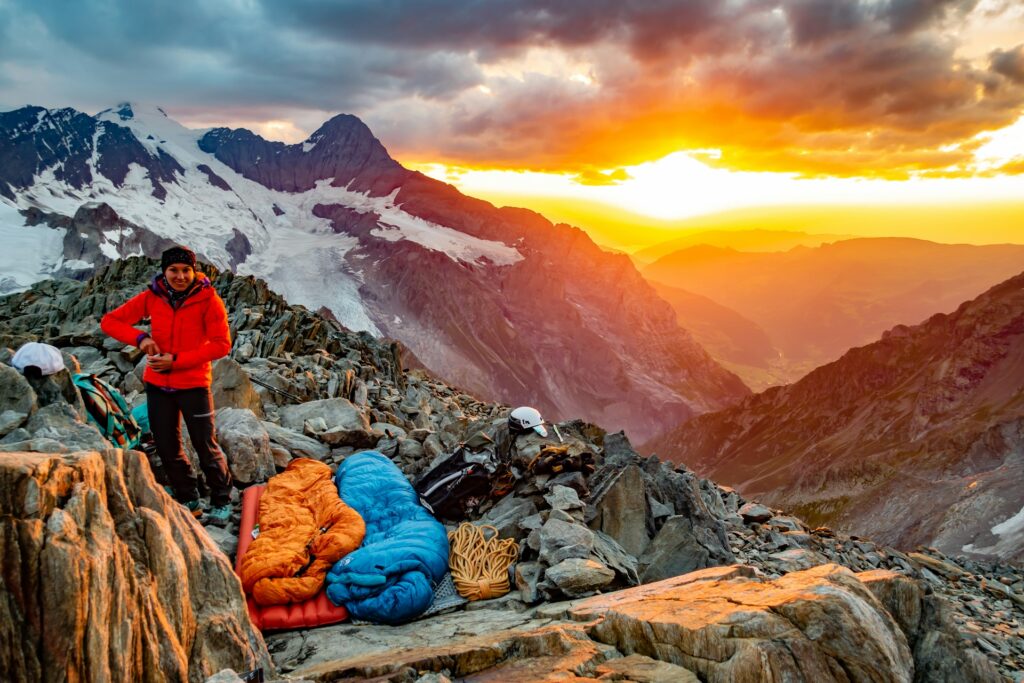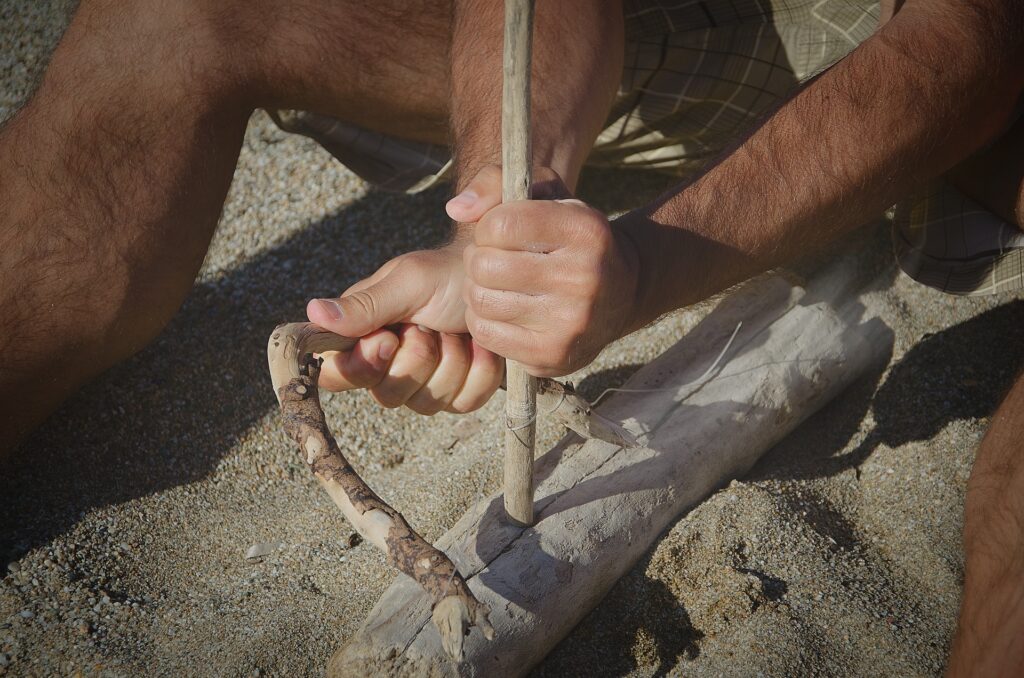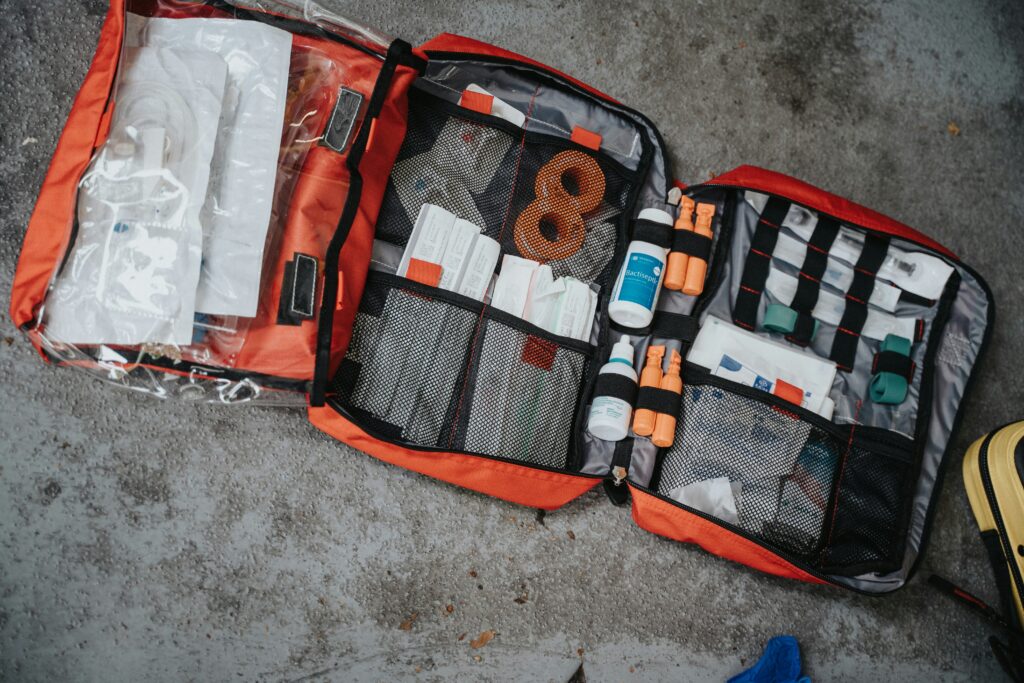Taking on a mountain adventure is an exciting experience that tests both your physical and mental stamina. Ready to conquer the mountains? Let’s make sure you have everything you need before embarking on what promises to be an epic adventure. Anything might happen during your adventure, including unexpected detours and sudden weather changes.
Packing the appropriate survival kit makes all the difference. We have compiled the essential survival gear for your outdoor trips. Consider it your go-to guide for making sure you stay hydrated, nourished, and safe. We have everything you need, from what to choose as a snack to keep your energy levels high to navigation equipment that can help you stay on course.
In this blog, we will discuss the top 10 must-have survival gears for every adventure, providing detailed insights into why they are essential.
Essential Survival Skills

Before we explore the gears, let’s discuss essential survival skills. Having top-notch equipment is invaluable, but knowing how to use it is just as important. These abilities cover a wide range of skills needed to remain effective and safe in isolated and unpredictably changing circumstances.
Staying calm is the key in any situation. The ability to read maps and use a compass is essential to staying on safe paths over difficult terrain. First aid knowledge allows for quick responses to injuries and illnesses when medical aid isn’t immediately available.
Reduce potential risks by having a better understanding of weather patterns, which improves the ability to prepare and respond. The mountains are calling, and you must go. But you should be equipped with these efficient skills to ensure a safe and enjoyable adventure.
Top 10 Must-Have Survival Gear
Here is a curated list of must-have survival gear for your mountain adventure, as well as other various outdoor activities:
1. Nutrition: Smart Snacking

Nourishing is not about filling your tummy; it is your fuel. Your body constantly needs food to keep you strong. Foods like energy gels, bars, gummies, and powders are designed to provide quick energy. These food items are easy to carry, lightweight, and packed with nutrients.
Try to pack snacks that can offer 200 to 400 calories each. Consume one snack per hour while you’re moving. This steady intake maintains your energy levels and keeps you away from fatigue.
Choosing nutritious food ensures you’re equipped to handle whatever the mountain throws your way. Pack smart, pack light, and pack with purpose.
2. Hydration: Water Bladders & Portable Water Filters

Staying hydrated is crucial during your outdoor adventures. Having a reliable source of clean drinking water is non-negotiable. Dehydration leads to some serious issues, like heat exhaustion or hypothermia, especially during outdoor activities.
A Hydration Bladder is a good choice, allowing you to sip water on the move. Those who prefer bottles opt for Bottles With Built-In Filters. Always carry a backup water purification method. Purification Tablets and Lifestraw: A Portable Water Filter are some good alternatives.
If you lack purification tools, drink from flowing water sources rather than stagnant pools, and boil the water if possible. Remember to drink regularly, not just when you’re thirsty.
3. Shelter: Bivvy, Blanket & Paracord

The unpredictable conditions of the mountains or outdoors demand reliable shelter for safety and comfort. Lack of adequate protection can quickly turn an enjoyable outing into a difficult one.
An Emergency Bivvy is crucial for sudden stops, offering lightweight yet essential protection from wind, rain, and cold. Carry a Tarp and Paracord. A tarp functions as an extra shelter, gear protection, or ground cover. Paracord helps secure shelter components and other gear.
Always pack an emergency shelter for defense against wind and rain. Options such as a Bivy Sack, Emergency Blanket, Hammock, Ultralight Tarp, or even a Large Plastic Trash Bag can serve effectively when a Tent isn’t feasible.
4. Fire Starters: Reliable Lighter & Firestarter Kit

Mastering the technique of fire starting is one of the most important skills. It provides warmth, allows for cooking and water purification, offers light, and can deter wildlife.
Pack a reliable Lighter that is weatherproof, lightweight, and can include integrated features like a built-in flashlight and tinder. Opt for Waterproof Matches or Mag Strike Fire Starters for added reliability.
Build your firestarter kit with Dry Tinder stored in a Waterproof Bag, Candles, Priming Paste, Resin-Soaked Wood Clusters, or Lint from a clothes dryer. These fire-starting essentials ensure you’re ready for any situation in the wilderness.
5. Tools: Multitools, Knives, And Whistles

Tools like multitools, knives, and whistles are essential for any adventure. A Multitool is a collection of functional knives and screwdrivers; it is like having a toolbox in your bag. From trimming branches and repairing gear to opening cans, you would love its versatility, replacing multiple tools with just one.
A Knife is another essential for cutting rope, preparing food, or handling unexpected situations. Choose one made of durable materials like stainless steel to ensure longevity. A Whistle may seem simple, but its utility is profound.
In low visibility conditions or emergencies, its sharp sound can guide rescuers or help you locate others. These tools not only enhance safety but also lighten your load by reducing multiple functions into compact, portable forms.
6. First Aid Kit

When you are heading into the wilderness, access to medical aid is limited. Making a well-stocked first aid kit is essential. It helps you against injuries ranging from minor cuts to more serious wounds or sprains. A significant majority of people have used their first aid kits at some point during a crucial time.
Customize your first aid kit based on factors like trip duration, group size, and the specific medical needs of others. Include Adhesive Bandages, Gauze Pads, Disinfecting Ointment, Adhesive Tape, Pain Relievers, and Tools For Treating Blisters and more severe injuries in your kit.
A well-prepared first aid kit can make a significant difference in handling unexpected medical situations.
7. Navigation: Maps and compass

In the wilderness, having a map and compass is crucial for staying oriented and avoiding getting lost. Despite the convenience of GPS and smartphones, sometimes they fail due to battery issues, signal loss, or freezing screens.
A Traditional Compass paired with a Topographical Map ensures reliable navigation regardless of technology’s pitfalls. Practice reading maps and using a compass to confidently navigate diverse terrains.
A Compass With A Sighting Mirror can help signal rescuers with sunlight. While smartphones offer GPS capabilities, bringing Analog Navigation Tools ensures independence from battery reliance and cell tower connectivity, making them indispensable for any outdoor excursion.
8. Insulation: Extra Clothing

Having extra clothing can be a lifesaver. The amount you pack depends on how long you’ll be out and the environment you’re exploring.
For camping trips, a basic rule of thumb is to pack three outfits: one to wear, an extra set for emergencies, and another for sleeping.
In hot climates, prioritize Lightweight, Breathable Fabrics that wick away sweat to keep you cool and comfortable. This helps regulate your body temperature and prevents overheating, especially during strenuous activities.
Proper layering is key in any weather. Even in warmer regions, temperatures can drop at night or during unexpected weather changes. A Light Jacket Or Fleece can make a significant difference in maintaining comfort and safety.
9. Communication: Phone or Satellite Phone

Communication tools like Cell Phones or Satellite Phones are lifelines in the wilderness. Cell phones are convenient but limited by network coverage in remote areas. Satellite phones, operating independently of networks, are more dependable for emergency communication in isolated locations.
Being able to call for help or connect with loved ones provides peace of mind and quick rescue response times. Before heading out, check coverage maps and understand your device’s limitations.
Keep your phone charged and carry spare batteries or a portable charger. Reliable communication is crucial for safety in the wilderness.
10. Torches: Headlamps

Carrying a Torch or Headlamp in your backpack is essential for mountain excursions that may extend into the evening. A headlamp is particularly convenient, providing hands-free lighting for tasks like setting up camp, navigating, or reading a map. It’s crucial for activities like climbing, where both hands are needed.
When choosing a headlamp, prioritize brightness, battery life, and comfort. Opt for models with adjustable straps and lightweight designs for extended wear. The right torch or headlamp enhances safety and convenience, ensuring reliable illumination throughout your adventure.
Printable Survival Gear Checklist

To ensure stress-free packing, take advantage of our printable survival gear checklist, which will eventually help in organizing the packing effortlessly, and you can customize it by adding your own gear.
Don’t forget any essential gear or supplies, and follow the guidance provided above in this article to make your outdoors enjoyable.
Conclusion
In the mountains, being prepared is essential for handling any situation. Carrying the right gear shows responsibility for your own safety. Anticipating possible obstacles can make the difference between an amazing adventure and an emergency in the wild and beautiful mountains.
Whether you’re setting out on an easy hike or tackling more challenging terrain, always be ready for whatever may come your way. The mountains constantly remind us of the importance of humility and foresight in everything we do. By preparing thoroughly, you can enjoy your time in nature with confidence and peace of mind.
Safe adventures!
FAQs
What should I do if I encounter wildlife while hiking?
Stay calm and avoid sudden movements. Back away slowly while making yourself appear larger. Do not run or turn your back on the animal.
What should I do if I get lost in the mountains?
Stay calm and assess your surroundings. If you have a map and compass, try to reorient yourself. If lost, stay put, conserve energy, and signal for help.
How can I minimize my impact on the environment while hiking?
Practice Leave No Trace principles: pack all trash, stay on established trails, minimize campfire impacts, and respect wildlife and natural habitats.

